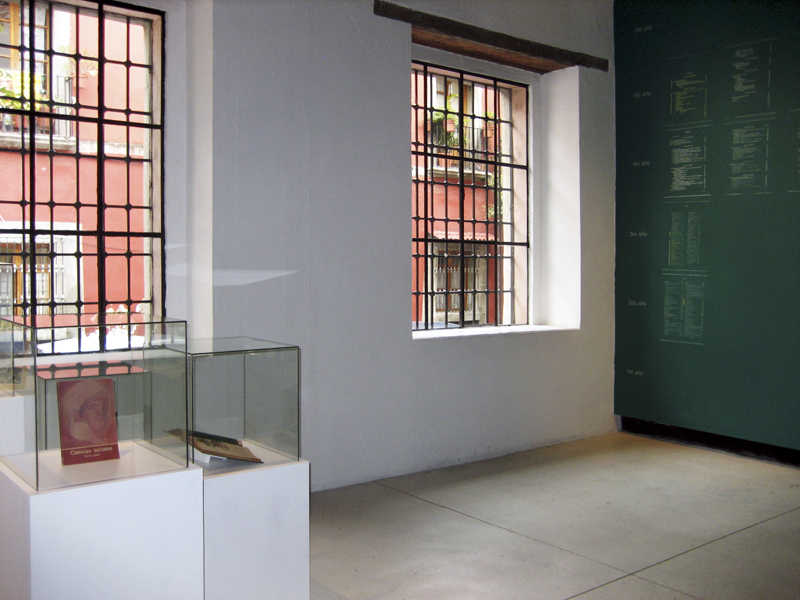
In this same room, a second timeline, drawn with chalk over green walls, depicted the indexes of the textbooks. This material made obvious references to elementary education. Its impermanency invited the viewer to think on the practical possibility of changing the way history has been written and taught. Yellow highlights on these chalk indexes indicated whenever students had been presented material of pre-Hispanic civilizations. Each revision followed the way pedagogues from consecutive generations surmised the most efficient and appropriate cultural knowledge from which to learn and the appropriate methodologies to do so. A major transformation in the seventies is the realization that a student might learn better from the past through a process of identification from a moment in the present. Hence the curricula changed from the description of a great variety of pre-Hispanic civilizations to a more personal appropriation of fewer of them. But what happen to the rest? Erased from the books these civilizations and their costumes perish in the eyes of the students. During the latest revision of the History course's curricula, the biggest modification happened in the middle school textbooks. The decision was to simply erase revisions from the pre-Hispanic past. Consequently students are only taught about their indigenous inheritance almost entirely during their third year of elementary school.